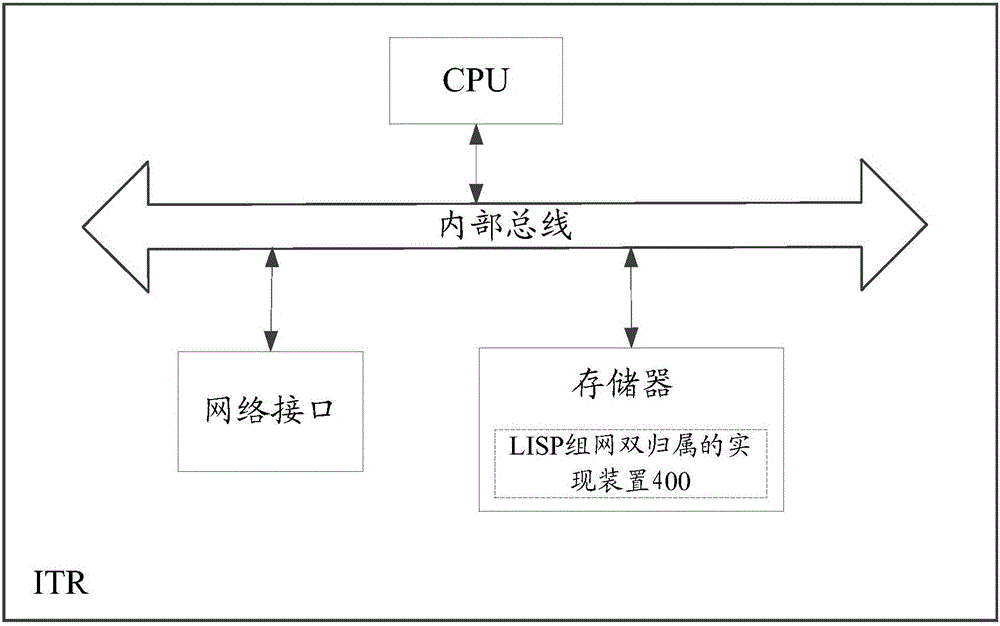LISP (Locator/Identity Separation Protocol) networking dual-homing realization method and device
An implementation method and dual-homing technology, applied in the field of communications, can solve the problem that dual-ITR networking cannot achieve dual-homing networking capabilities, and achieve the effects of disaster tolerance and load balancing, cost savings, and simplified configuration.
- Summary
- Abstract
- Description
- Claims
- Application Information
AI Technical Summary
Problems solved by technology
Method used
Image
Examples
Embodiment Construction
[0035] In the prior art, there are two solutions for realizing LISP dual-homing. One is that for each type of operator, ITR2 needs to add a set of addresses pointing to MR for each host and match the corresponding address mapping table. If there are N types of operators and M hosts, ITR2 needs to add N *M kinds of configurations; and it is also necessary to add an address translation relationship to NAT. If there are N types of operators, NAT needs to configure N*2 address translation relationships. Therefore, when the number of hosts is large and there are many types of operators, the configuration is just It will be very complicated and huge, and the logic is complicated, which is not conducive to maintenance. The other is that it is equivalent to adding one more ITR for each type of operator, and the number of ITR equipment is the number of operator types * 2. This not only increases the complexity of the network, but also greatly increases the cost.
[0036] Therefore, wh...
PUM
 Login to View More
Login to View More Abstract
Description
Claims
Application Information
 Login to View More
Login to View More - R&D
- Intellectual Property
- Life Sciences
- Materials
- Tech Scout
- Unparalleled Data Quality
- Higher Quality Content
- 60% Fewer Hallucinations
Browse by: Latest US Patents, China's latest patents, Technical Efficacy Thesaurus, Application Domain, Technology Topic, Popular Technical Reports.
© 2025 PatSnap. All rights reserved.Legal|Privacy policy|Modern Slavery Act Transparency Statement|Sitemap|About US| Contact US: help@patsnap.com



